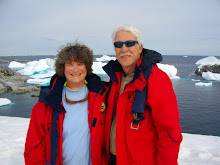Feeding more people - Rice research
The green revolution has slowed, causing concern for feeding people in developing India and the Philippines.
The green revolution, which took off in the 1960s, was scientific research for higher yield wheat and rice for the specific growing conditions in third-world countries. American agricultural scientist Norman Borlaug received the Nobel Peace Prize for his work. For example, Mexico became an exporter of wheat in 1963 and India and Pakistan nearly double their yields of wheat between 1965 and 1970.
But now the increase in actual yields is slowing. While there are increased challenges from urbanization taking prime land and global warming.
he construction of factories, apartment blocks and highways is paving over usable land in China, India and Indonesia. India has underinvested in agriculture for decades as it fostered its high-tech services and manufacturing industries. Climate change may be playing a role, too, by increasing the frequency of extreme droughts and floods.The Wall Street Journal (subscription) on the current research efforts:
Some researchers are experimenting with seed varieties that can withstand droughts or floods. Others are growing rice in dry soil, much like corn, rather than flooded paddies. Strategies also include trying to alter the way rice plants perform photosynthesis and concocting hybrid varieties that can boost yields by as much as 20%.
.... "Zeigler believes that with a few imaginative scientists, you can really make a change," says Randy Barker, an agricultural economist who worked at IRRI in the 1960s and 1970s and recently returned to serve as acting head of IRRI's social-sciences department. Though he acknowledges some progress, "I don't see any major breakthroughs," he says.
Some rural-development experts have criticized IRRI sharply over the years for promoting rice varieties like IR8 that require heavy doses of water, fertilizer and other chemicals. They believe those methods contributed to the same environmental problems that the IRRI worries about now. They also fear that IRRI's tech-heavy slant could leave farmers dependent on expensive new seeds that require special care or costly chemicals to generate good results.
Scientists at IRRI "see plants as little machines and redesign them" endlessly, but that's not always the best approach, says Norman Uphoff, a Cornell University professor and rice specialist. He acknowledges that the IRRI is doing some good work. But he is from the camp that advocates lower-tech solutions such as spacing seeds farther apart so the plants can get more sunlight. That simple technique, he says, can boost plant growth.
Officials at IRRI say that some past approaches might have short-changed the environment, but that higher rice yields also helped save lives. The institute says it is now far more focused on environmentally sustainable technologies such as methods that use less water.
IRRI's annual budget of about $30 million comes chiefly from development agencies in the U.S., Japan and other wealthy countries, though it does accept some money from private companies. Although companies like Monsanto Co. of the U.S. also do some rice research, the industry also relies heavily on IRRI to lead the way. When IRRI develops new seeds it makes them available for free to anyone who requests them.


0 Comments:
Post a Comment
<< Home